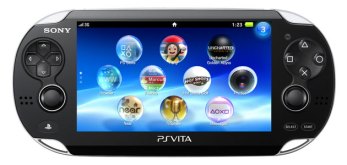 With Sony’s new PlayStation Vita portable gaming device going on sale in Japan last Saturday, executives at the company will have been waiting nervously for news of sales figures for its opening weekend.
With Sony’s new PlayStation Vita portable gaming device going on sale in Japan last Saturday, executives at the company will have been waiting nervously for news of sales figures for its opening weekend.
The chewing of finger nails may now cease, as research firm Enterbrain has come up with some data: it says the electronics giant sold 321,400 units in its first two days. As a comparison, that’s 50,000 units fewer than what Nintendo achieved with its 3DS on its opening two days back in February, but it still sounds pretty good.
However, Sony knows that while these initial sales figures may look promising, the hard work is only just beginning as it must seek to ensure its new mobile device continues to sell in healthy numbers.
The company will recall only too well how sales of the Nintendo 3DS crashed soon after launch, forcing the Kyoto-based company to slash the cost of its device from $250 to $170. It turned out to be a good move, however, as first-year sales of the 3DS are now on course to beat first-year sales of its DS predecessor, which hit the market six years ago.
But what Sony and Nintendo currently fear most is not competition from each other, but instead competition from smartphones and tablets. The ubiquity of such mobile devices, with their enormous number of cheap – and in many cases free – game apps is making it harder for the likes of Sony and Nintendo to survive. Indeed, a recent analysis by Flurry Analytics will have made uncomfortable reading for executives at the two companies, with it being predicted that Sony and Nintendo will by the end of this year have taken 42 percent of the software revenue in the portable gaming market – down from 81 percent just two years ago.
Sony will be sincerely hoping it can claw back some of the market from iOS and Android devices with the release of the Vita. But do people really want to carry around a gaming device and a smartphone, which can of course be used for a lot more besides just playing games?
The Japanese company’s new device will hit shelves in the US and Europe in February 2012, with the Wi-Fi version going for $250 and the Wi-Fi/3G model retailing for $300.
[Source: Reuters]


